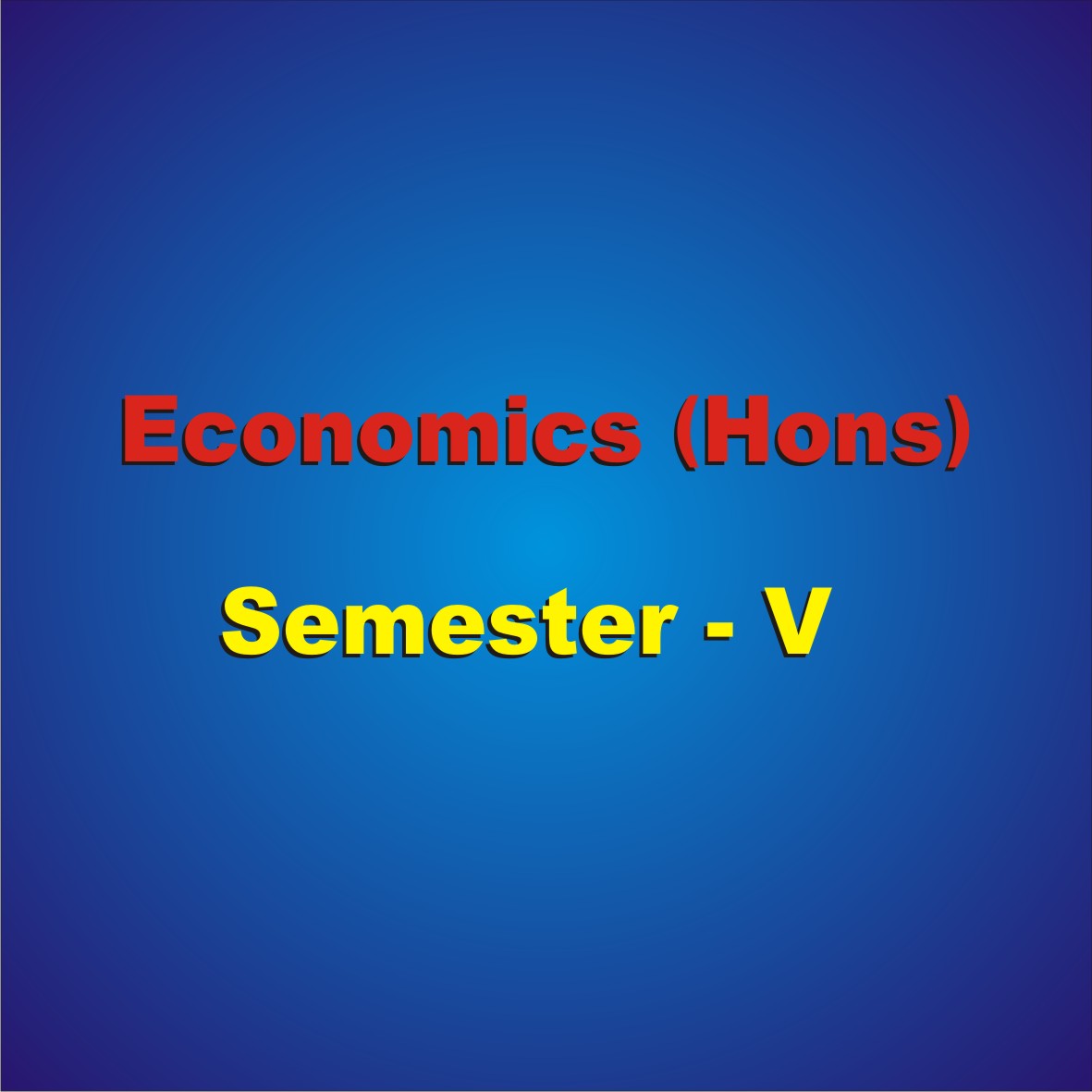Welcome to Prime Academy
We provide Best Online Coaching for Introductory Macro Economics [ECON 004] for Economics (H) Semester II, University of Delhi
For getting access of recorded video lectures of
Introductory Macro Economics [ECON 004] for Economics (H) Semester II, University of Delhi
you need to subscribe our course.
If you are not registered at our website then Register Here
(After registration please inform us at +91 9899 192027 to get the access)
If you are already registered and have Got the access then Login to watch the Lectures
Semester 2 Subjects
►Introductory Macro Economics
►Intermediate Mathematical Methods for Economics
►Intermediate Statistics for Economics
►GE Introductory Probability
Reading List of Introductory Macro Economics
The Introductory Macro Economics [ECON 004] Course for BA (Hons) Economics Semester II, Delhi University has been taught by Mr. Dheeraj Suri. The Video Lectures are based upon the books prescribed by the University of Delhi. The Duration of Video Lectures is approximately 30 Hours.
Access of Video Lectures is provided on any one of the following devices:
Windows Computer or Laptop, or
Android Phone or Tablet, or
Apple Iphone or Ipad, or
Apple Macbook,
till end of Semester II Exams.
Course Fee : Rs. 7000
Fee Structure :
| Single Device | Two Devices | |
|---|---|---|
| Single Subject | Rs. 7000 | Rs. 12,000 |
| Two Subjects | Rs. 13,500 | Rs. 23,000 |
| Three Subjects | Rs. 20,000 | Rs. 33,000 |
| Four Subjects | Rs. 26,000 | Rs. 42,000 |
Once You get the access you need to login and download our APP and all the lectures from your login account and play in your device.
You will get :
►Full Course Video Lectures
►Complete Study Material (PDF Notes) which includes Concepts, Previous Year Questions, Numerical Questions, MCQ’s and Important Questions
►Live Online Doubts Sessions with Expert Faculty (at least twice a week) for resolution of Doubts
►Online Discussion Forum to Post Your Queries to Discuss with Faculty & other fellow Students
►Mock Tests at the Website for regular assessment and progress tracking
►Video Lectures Cover Theory Portions Exhaustively + Complete Solutions of Back Questions of Readings + Solutions of Previous Years Papers + Large Number of Numericals
►Comprehensive Coverage of Syllabus and Exam Oriented Preperation
This online coaching platform aims to provide a supportive and engaging learning environment for students to achieve academic success and excel in their Economics Honours program.
Demo PDF Notes
Click here for Demo PDF of Study Material
For Complete PDF Notes of Introductory Macro Economics
Contact us at +91 9899192027
Demo Quiz
For Complete Mock Test Series of Introductory Macro Economics, You need to subscribe our course.
Contact us at +91 9899192027
Demo Lectures
Exam Pattern
The Question Paper will be of 90 Marks
Suggested weightage for each unit in the final examination
Unit I : 20 marks
Unit II : 20 marks
Unit III : 20 marks
Unit IV : 30 marks
Paper Pattern
►The end Semester Exam of 90 Marks will comprise of Numericals and Other Questions.
On Payment of Fee we will create your account on our website & you need to login and download all the lectures & our APP through that login account
Payment Details
To purchase any course you need to transfer the amount either through Google Pay or PhonePe at 9811261671 or Paytm at 9899192027 or Transfer through net banking IMPS into the following account
Account Details
Dheeraj Suri
Saving Account Number
392010100053871
Axis Bank, Model Town Branch
Delhi – 110009
IFS Code : UTIB0000392
Payment App Details
GPay Number : +91 9811261671
PhonePe Number : +91 9811261671
Paytm Number : 9899192027
After transfer update us with payment details through Whatsapp at +91 9899192027
Course Content of Our Video Lectures
Lectures are as per Latest Syllabus for 2025 UGCF
Unit – 1 : Introduction of Macro Economics and National Income Accounting
Chapter 1 : Introduction to Macroeconomics
Duration of Video Lectures : 110 Minutes
Based Upon Chapter 1 Abel, Bernanke & Croushore
Topics Covered
1.1 ►Macroeconomics, Long Run Economic Growth, Business Cycles, Labour Force, Unemployment, Types of Unemployment, Inflation, Nominal and Real Interest Rate,
1.2 ►Open & Closed Economy, Macro Economic Policy, Positive & Normative Economics, Classical’s Versus Keynesians
Chapter 2 : National Income Accounting
Duration of Video Lectures : 190 Minutes
Based Upon Chapter 2 Abel, Bernanke & Croushore
Topics Covered
2.1 ►National Income Accounting : The Measurement of Production, Income and Expenditure
2.2 ►Gross Domestic Product, GNP Versus GDP, The Expenditure Approach to Measuring GDP, The Income Approach to Measuring GDP,
2.3 ►Saving and Wealth, Private Saving, Government Saving & National Saving,
2.4 ►Real GDP, Price Indexes and Inflation,
2.5 ►Interest Rates,
Chapter 3 : Balance of Payment
Duration of Video Lectures : 44 Minutes
Based Upon Chapter 5.1 Abel, Bernanke & Croushore
Topics Covered
3.1 ►Balance of Payments Accounting, The Current Account, The Capital & Financial Account, The Official Settlements Account, Net Foreign Assets and Balance of Payments Accounts
Chapter 4 : Economic Survey
Duration of Video Lectures : 60 Minutes
Based Upon Economic Survey 2022-23
Topics Covered
4.1 ►Basic Concepts of National Accounts Aggregates
Unit – 2 : Money
Chapter 5 : Money
Duration of Video Lectures : 77 Minutes
Based Upon Chapter 7.1 Abel, Bernanke & Croushore
Topics Covered
5.1 ►Definition of Money, Functions of Money, Types of Money, Properties of Money,
5.2 ►Monetary Aggregates
Chapter 6 : Quantity Theory of Money
Duration of Video Lectures : 71 Minutes
Based Upon Chapter 4.1 Froyen
Topics Covered
6.1 ►The Equation of Exchange, Implications of QTM, QTM Numericals
6.2 ►Cambridge Approach to Quantity Theory,
6.3 ►The Classical Aggregate Demand Curve,
Chapter 7 : Financial Markets
Duration of Video Lectures : 202 Minutes
Based Upon Chapter 4 Blanchard
Topics Covered
7.1 ►The Demand for Money, Factors Affecting Money Demand,
7.2 ►Determining the Interest Rate, Open Market Operations, Relation Between Price of Bond and Interest Rate,
7.3 ►Financial Intermediaries, Balance Sheet of Banks, Demand and Supply of Central Bank Money,
7.4 ►Money Multiplier, High Powered Money, Numerical Problems
Unit – 3 : Simple Theory of Income determination
Chapter 8 : Classical Macroeconomics
Duration of Video Lectures : 65 Minutes
Based Upon Chapter 3 Froyen
Topics Covered
8.1 ►Classical Revolution, Aggregate Demand,
8.2 ►Production Functions, Marginal Product of Labour,
8.3 ►Employment, Labour Demand & Labour Supply,
8.4 ►Equilibrium Output and Employment, the Classical Aggregate Supply Curve,
Chapter 9 : Classical Macroeconomics
Duration of Video Lectures : 65 Minutes
Based Upon Chapter 4 Froyen
Topics Covered
9.1 ►Classical Aggregate Demand Curve,
9.2 ►The Classical Theory of Interest Rate,
9.3 ►Policy Implications of Classical Equilibrium Model, Fiscal Policy & Monetary Policy
Chapter 10 : Income & Spending
Duration of Video Lectures : 117 Minutes
Based Upon Chapter 9 Dornbusch, Fischer & Startz
Topics Covered
10.1 ►Aggregate Demand and Equilibrium Output,
10.2 ►The Consumption Function & Aggregate Demand,
10.3 ►The Multiplier in Two Sector Economy,
10.4 ►Equilibrium Output and the Multiplier in Three Sector Economy,
10.5 ►The Budget, The Full Employment Budget Surplus
Unit – 4 : IS-LM Analysis and Aggregate Demand
Chapter 11 : IS – LM Model
Duration of Video Lectures : 230 Minutes
Based Upon Chapter 10 Dornbusch, Fischer & Startz
Topics Covered
11.1 ►The Goods Market and the IS Curve, Graphical & Algebraic Derivation of the IS Curve, Slope of IS Curve, Shifts in the IS Curve,
11.2 ►The Money Market and the LM Curve, Graphical & Algebraic Derivation of the LM Curve, Slope of LM Curve, Shifts in the LM Curve,
11.3 ►Simultaneous Equilibrium in the Goods and the Money Market,
11.4 ►Deriving the Aggregate Demand Schedule, Fiscal Policy Multiplier & Monetary Policy Multiplier
Chapter 12 : Monetary & Fiscal Policy
Duration of Video Lectures : 304 Minutes
Based Upon Chapter 11 Dornbusch, Fischer & Startz
Topics Covered
12.1 ► Monetary Policy, The Transmission Mechanism, The Liquidity Trap, The Classical Case,
12.2 ► Fiscal Policy & Crowding Out, Effect of Expansionary Fiscal Policy under Liquidity Trap and Under Classical Case, Accommodating Monetary Policy,
12.3 ► Policy Mix,
End of Syllabus
Exam Pattern
The Question Paper will be of 90 Marks
Suggested weightage for each unit in the final examination
Unit I : 20 marks
Unit II : 20 marks
Unit III : 20 marks
Unit IV : 30 marks
Paper Pattern
►The end Semester Exam of 90 Marks will comprise of Numericals and Other Questions.














